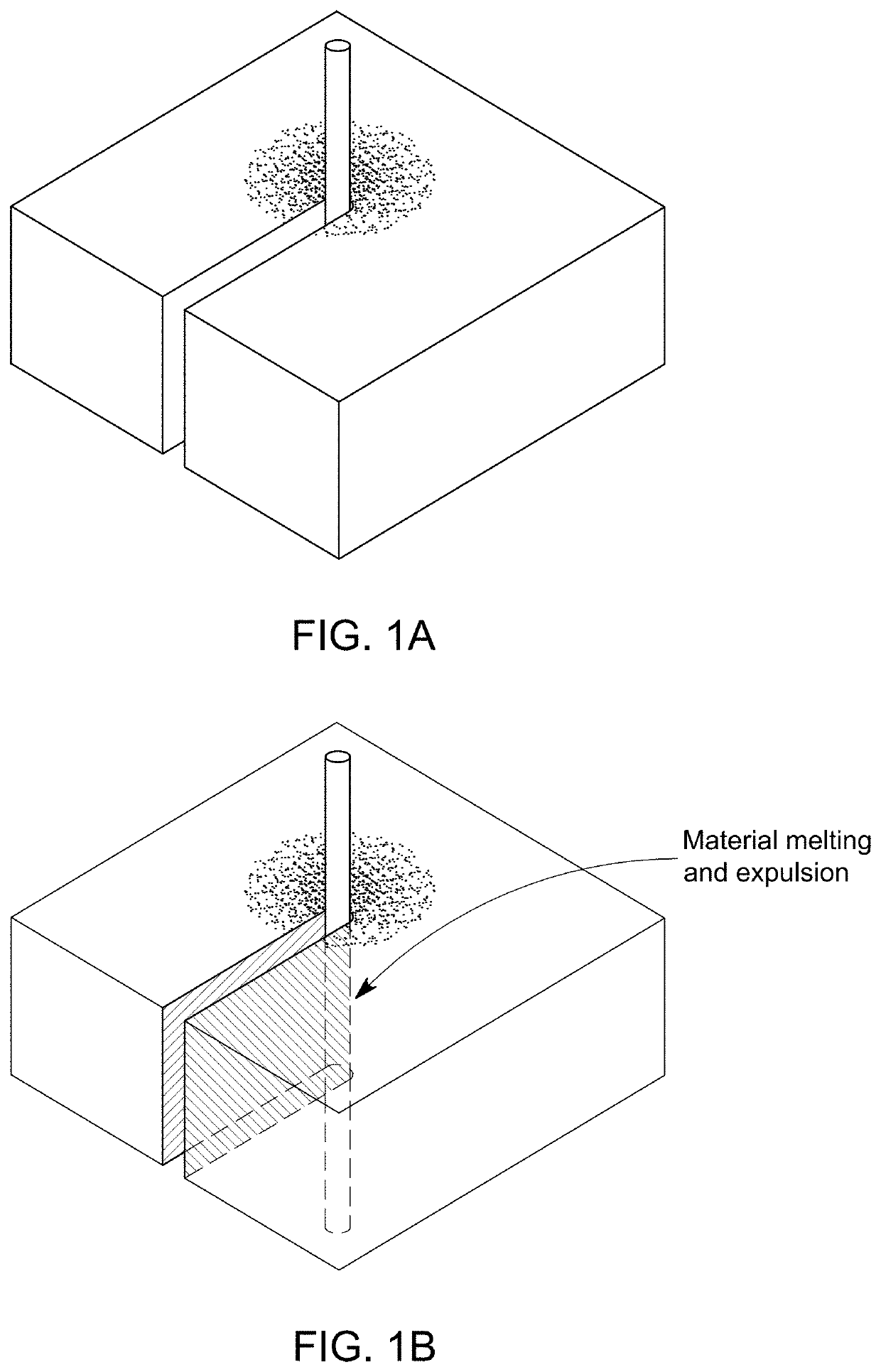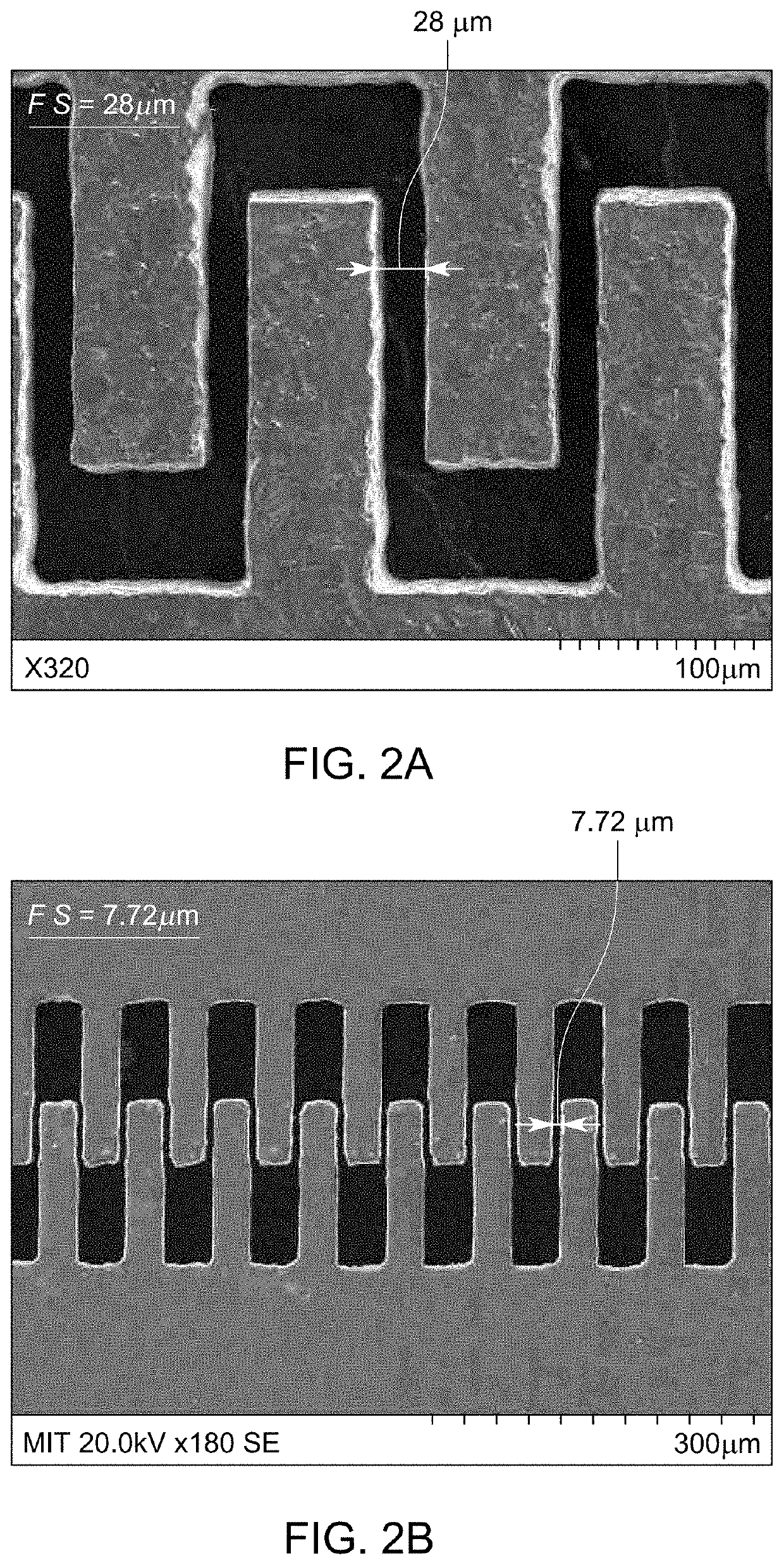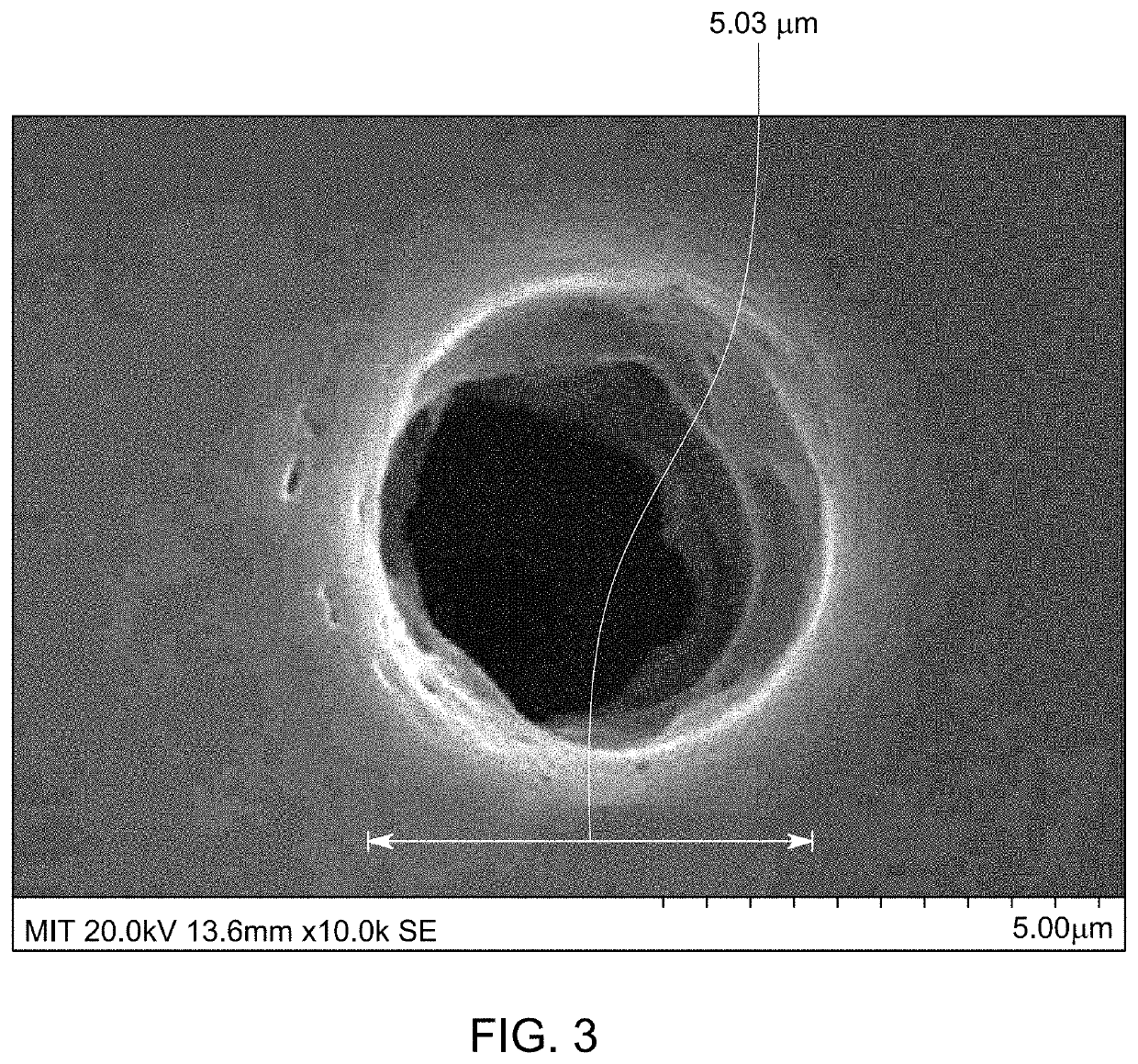Laser-Assisted Material Phase-Change and Expulsion Micro-Machining Process
a technology of phase change and expulsion, applied in the field of microelectromechanical systems, can solve the problems of affecting the application of these parts and previously unattainable features, and achieve the effect of high-aspect ratio (10:1) features and rapid production of small lateral features
- Summary
- Abstract
- Description
- Claims
- Application Information
AI Technical Summary
Benefits of technology
Problems solved by technology
Method used
Image
Examples
Embodiment Construction
1 Laser-Assisted Material Phase-Change & Expulsion (LAMPE) Micro-Machining
1.1 Introduction
[0058]Enabling MEMS fabrication using metals is advantageous because they offer a wide range of mechanical and electrical properties. Moreover, these properties can be tuned by the alloying process. The ability to fabricate MEM systems using metals empowers a new paradigm in MEMS design. Moreover, the metal foils used for MEMS fabrication are low-cost and easy to fabricate using a roll forming process [61]. Unfortunately, the existing wet and dry etching processes are isotropic and not suitable for fabricating high aspect ratio microstructures required for making MEMS.
[0059]At a macro-scale, lasers are widely used for cutting metal sheets. In this process, a laser is used to melt the metal, and a high-pressure air jet is used to expel the melted material. However, high-pressure jets cannot be employed at a micro-scale due to the delicate nature of the laser micro-machined structures. For this r...
PUM
| Property | Measurement | Unit |
|---|---|---|
| effective energy | aaaaa | aaaaa |
| effective energy | aaaaa | aaaaa |
| focal length | aaaaa | aaaaa |
Abstract
Description
Claims
Application Information
 Login to View More
Login to View More - R&D
- Intellectual Property
- Life Sciences
- Materials
- Tech Scout
- Unparalleled Data Quality
- Higher Quality Content
- 60% Fewer Hallucinations
Browse by: Latest US Patents, China's latest patents, Technical Efficacy Thesaurus, Application Domain, Technology Topic, Popular Technical Reports.
© 2025 PatSnap. All rights reserved.Legal|Privacy policy|Modern Slavery Act Transparency Statement|Sitemap|About US| Contact US: help@patsnap.com



